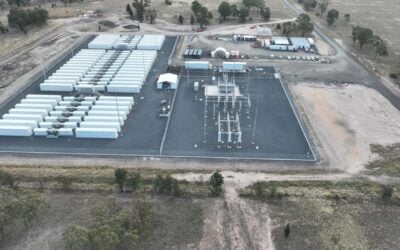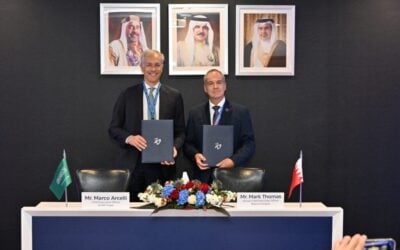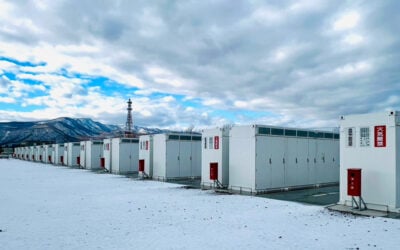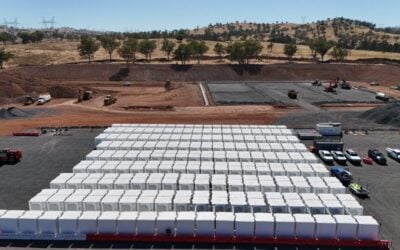The increasing amount of PV installed in combination with electrical storage options is bucking the trend in the opposite direction for overall residential solar installations in Germany.
That was one of the key messages from this morning’s proceedings at the Energy Storage Europe conference in Dusseldorf, which winds up on Wednesday.
The second day of the conference played host to a number of related conferences, one of which is the VDE Institut Financial Dialogue event. At a panel session titled ‘Tapping into the lucrative markets for energy storage’, it was clear that while none of the participants sees storage as a “goldmine” of financial opportunity, many in the industry believe electricity storage can both boost the viability of a PV system – especially in the residential market – and add value as part of a ‘whole system approach’ that could include connection with smart metering and thermostats.
The session’s moderator, Logan Goldie-Scot of Bloomberg New Energy Finance, said that at a grid level, storage represents an interesting opportunity for a small number of “first mover” players in specific markets, such as the grid-balancing frequency response market operated by utility PJM or the German primary reserve market.
Try Premium for just $1
- Full premium access for the first month at only $1
- Converts to an annual rate after 30 days unless cancelled
- Cancel anytime during the trial period
Premium Benefits
- Expert industry analysis and interviews
- Digital access to PV Tech Power journal
- Exclusive event discounts
Or get the full Premium subscription right away
Or continue reading this article for free
However, as Goldie-Scot and panellists, including representatives of residential system manufacturer Sonnenbatterie and solar inverter specialist SMA, explained, the residential market is where most companies expect to see the greatest stability, starting with the example of Germany.
The Energy Storage Europe conference in Dusseldorf. Photo credit: Andy Colthorpe.
Goldie-Scot said the growth potential of this segment is “huge”, as could be seen by figures from Germany’s national development bank, KfW, which offers some financial support with the upfront cost of PV-plus-storage systems, as long as the systems come from an accredited list of suppliers.
Areas where solar-plus-storage deployment is strongly supported by policy are a rarity, Goldie-Scot said. For example, Puerto Rico, as an island territory, has a mandate in place that all new PV systems must be fitted with a storage device that holds an equivalent to around 40% of the PV generation capacity.
In most countries however, especially developed nations with relatively stable grids, renewable energy penetration is yet to begin reaching the levels where storage as a flexibility resource is an absolute necessity to keep electricity networks stable.
Therefore, as Benjamin Schott of Sonnenbatterie went on to argue, in Germany, storage as a tool to aid self-consumption is a vital component for allowing householders to get good value from their ownership of solar power systems. Since PV system owners will no longer receive attractive feed-in tariffs (FiTs) for electricity fed into the grid network, necessitating them to hedge their home energy bill costs by self-consuming, in other words using their own PV power onsite, solar in Germany is now “only profitable” if combined with storage and self-consumption, Schott said.
Aleksandre Bukvic-Shaffer of SMA told PV Tech that the KfW scheme not only supported increased deployment of systems, but that it also acted to some extent to make simpler the consumer and installers’ task of selecting suitable systems that are manufactured to certain standards of quality and safety.
There appeared to be collective agreement among the panel members, who also included Claase Heise of regional finance institution NRW Bank Germany and Dr Peter Eckerle of StorREgio Energiespeichersysteme, that the industry, beginning with installers on the frontline, still needs education in what storage systems can do and how best to explain their benefits to customers.
Goldie-Scot gave an anecdotal example of a related technology from the UK, where he said he had been trying to switch electricity supplier. The installer who was trying to sell him a ‘smart thermostat’, basically did not know how it worked, he said.
From a financier’s perspective, Heise of NRW Bank Germany said he was most intrigued and excited by companies that “deliver technologies and services” rather than individual projects. In other words, the scope for product differentiation lies in the quality and range of value added to a PV system by having storage, rather than examining which companies lead the market in pure deployment numbers.
The residential market, he added, offered the steadiest returns and was likely to remain the most stable market segment for some time, partly because of the expected continuing dominance of lithium-ion as the battery technology of choice, a prediction he said was likely to hold true for the next 10 years or so.





